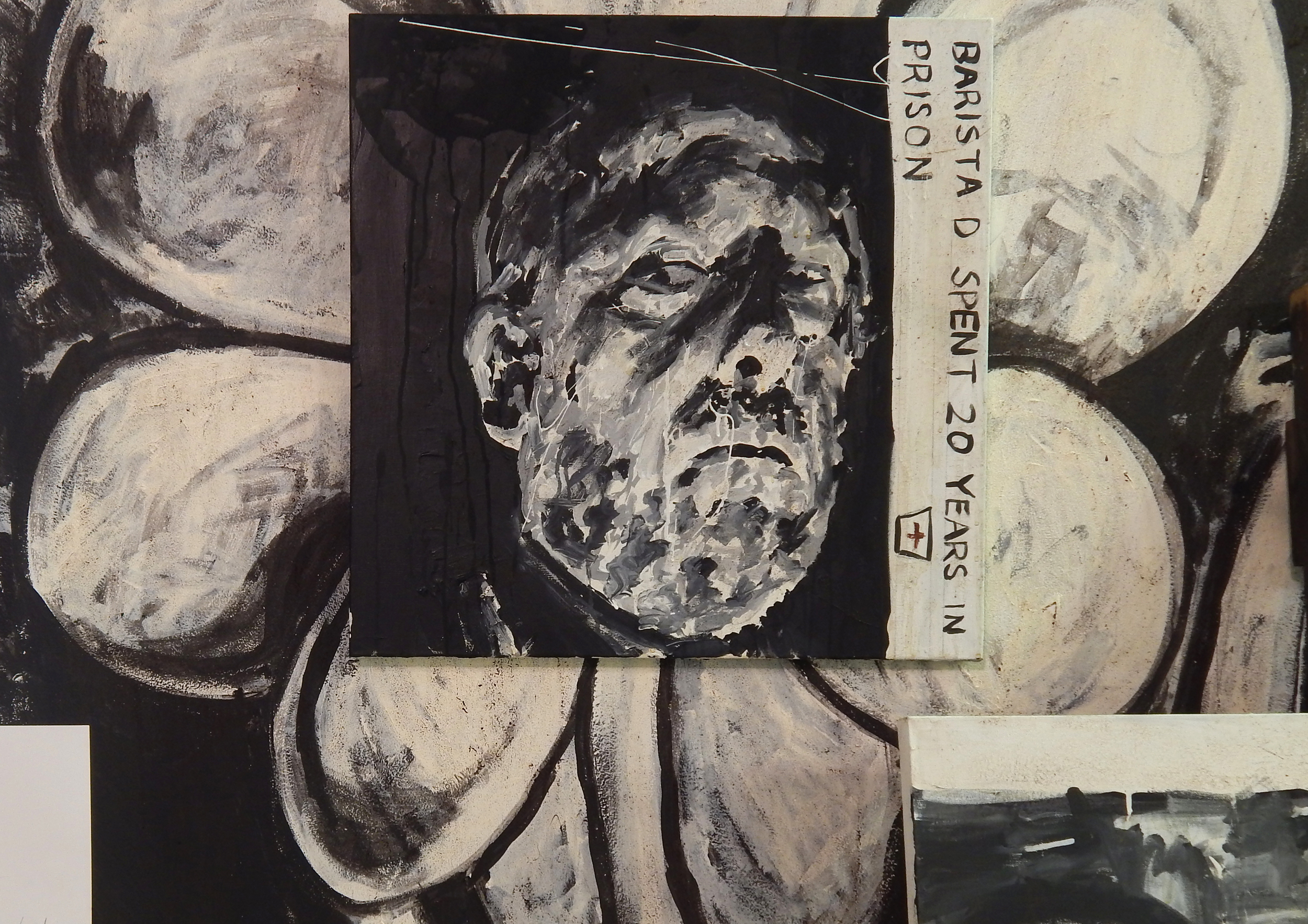In 2018, six months after the ________________ uprising was crushed by the National Guard, a group of low-wage workers, many of whom worked in coffee chains, formed the “13 Baristas Art Collective.” Its members were art school dropouts or had pretensions to be poets or writers. Some were involved in the Starbucks Workers Union and later the fast food strikes of 2014. They collectively produced a series of paintings, art objects and texts, working out their dreams of collective and individual revenge and redemption. While claiming a sort of anarchism the collective was actually dominated by the charistmatic Baristas “F” and “G”. “F” was a former regional manager of the ________________ coffee chain, who had once thought himself a “great writer.” After being demoted to the floor he became the principle agitator at his store for a higher minimum wage. “G” worked as a receptionist nearby. She had dropped out of art school and was the main architect of the “13 Baristas Art Collective.” “G” imagined they were creating the culture of a coming post-apocalyptic America. While they claimed thirteen members they never had more than five active members at any one time. This installation is an incomplete recreation of the collective’s studio. It was recreated by MFA candidate Adam Turl in the Lewis Center (Sam Fox School of Art), St. Louis, Missouri.
* * *
Click below for enlarged images.
Adam Turl is an artist, writer and socialist currently living in St. Louis, Missouri. He is an editor at Red Wedge and is presently pre-occupied with exploring past and present Marxist strategies in studio art. Turl is an MFA candidate at the Sam Fox School of Art and Design at Washington University in St. Louis.














